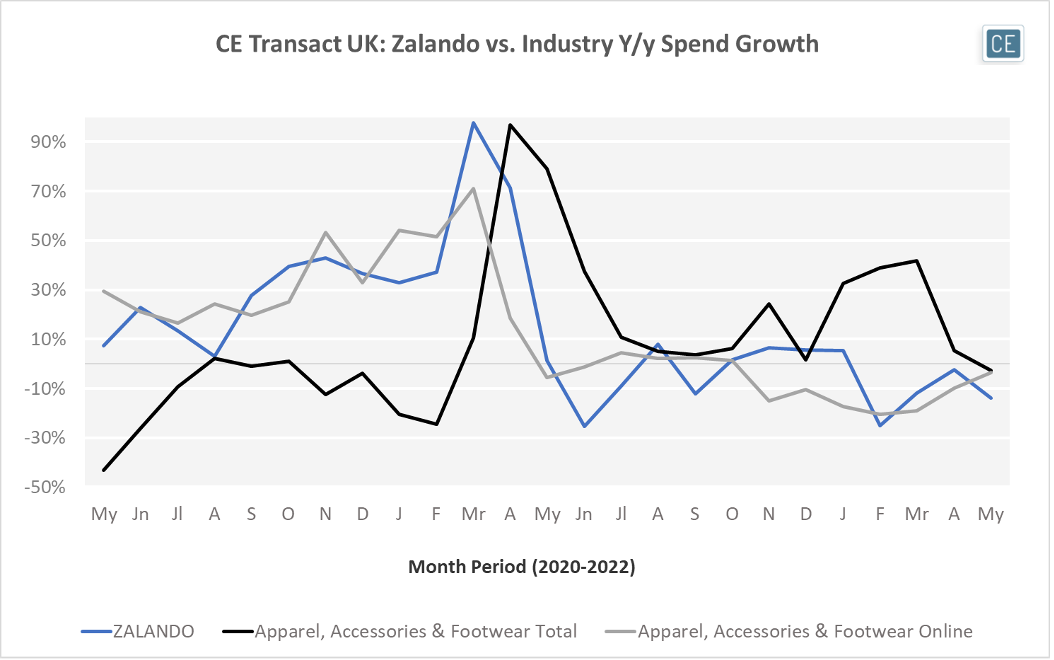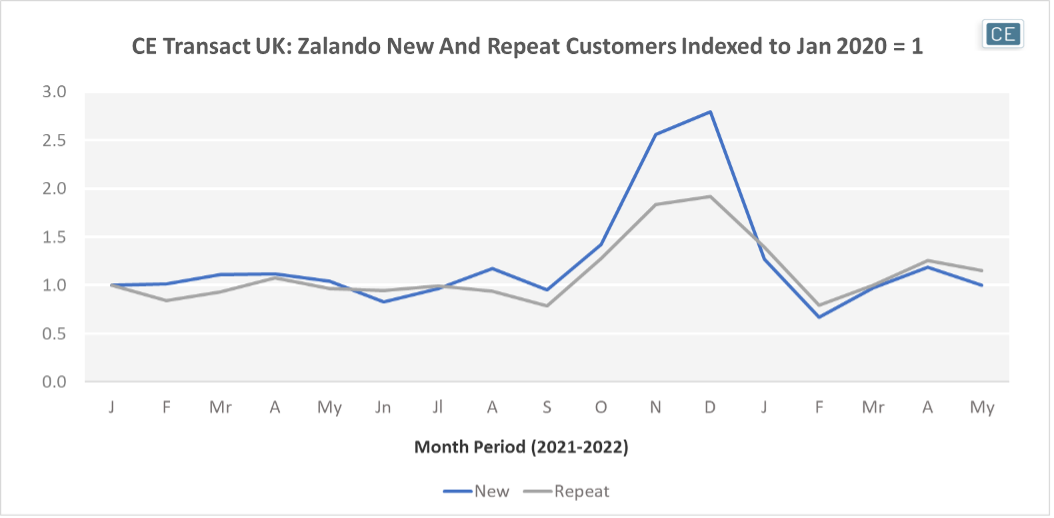
Zalando is blaming its recent woes on broader industry trends. But although other European online fashion retailers are also seeing slowing sales, is there more to the story? In today’s Insight Flash, we compare Zalando’s recent spend growth to the broader industry, break down trends for urban shoppers versus the total UK, and look at whether new customer acquisition has slowed.
Since the beginning of the year, Zalando has underperformed the overall Apparel, Accessories & Footwear Industry in the UK when it comes to y/y spend growth. Some portion of this may be due to pre-vaccination closures in the UK last winter, however, as the gap narrowed in April and May. Y/y UK spend growth for the online portion of the Apparel, Accessories & Footwear Industry has moved more closely with Zalando’s, but even here Zalando’s higher y/y growth in March and April slowed to a -14% decline in May versus a -4% decline for the online industry.
Industry Spend

Zalando’s claims that shoppers are tightening their wallets are supported by the data. In May, UK Zalando shoppers spent an average of £87.16 on the site, down -10% y/y. Even in London, the average shopper only spent £92.36, down -13% from the year before. Although London generally represents a large percentage of overall UK spend, Zalando has historically captured more spend in London than in the rest of the UK even on a per shopper basis. However, this margin narrowed in May, with the average spend for a London shopper only 6% higher than for the overall UK, the smallest difference in the last two years.
Average Spend per Customer

Given the trends in spend per customer, Zalando’s ability to attract new shoppers becomes even more important. If the company is continuing to build its base, it is more likely to see upside if spend per customer rises when macroeconomic pressures eventually ease. New customers surge during the holiday shopping period for Zalando, but otherwise the number of new shoppers acquired recently has been comparable to the number Zalando acquired in January 2021. Repeat shoppers are also more likely to come back during Q4 (although to a lesser extent than new shoppers are to purchase). An increasing number, although from a larger pool, made repeat purchases in April and May.
New vs. Repeat Shoppers

To learn more about the data behind this article and what Consumer Edge Research has to offer, visit www.consumer-edge.com.







Sign up to receive our stories in your inbox.
Data is changing the speed of business. Investors, Corporations, and Governments are buying new, differentiated data to gain visibility make better decisions. Don't fall behind. Let us help.













Sign up to receive our stories in your inbox.
Data is changing the speed of business. Investors, Corporations, and Governments are buying new, differentiated data to gain visibility make better decisions. Don't fall behind. Let us help.





